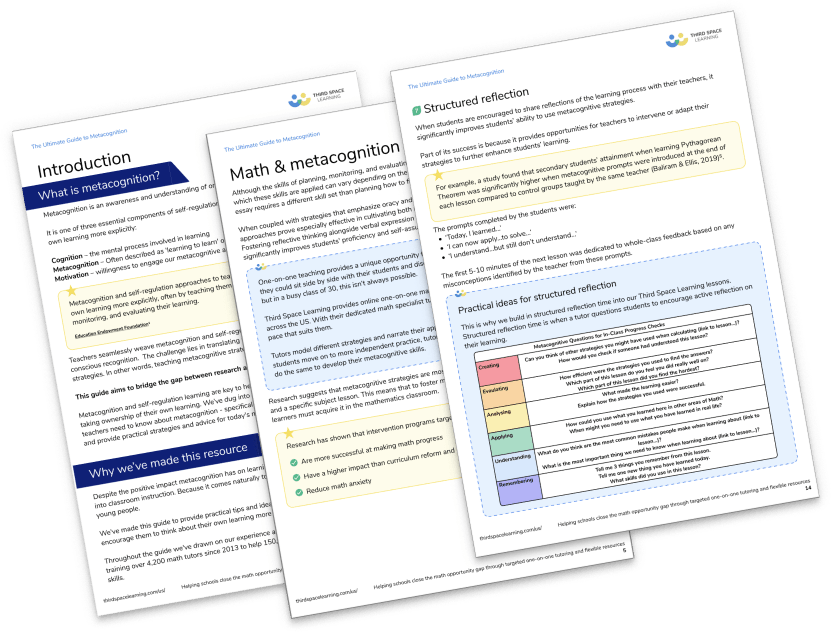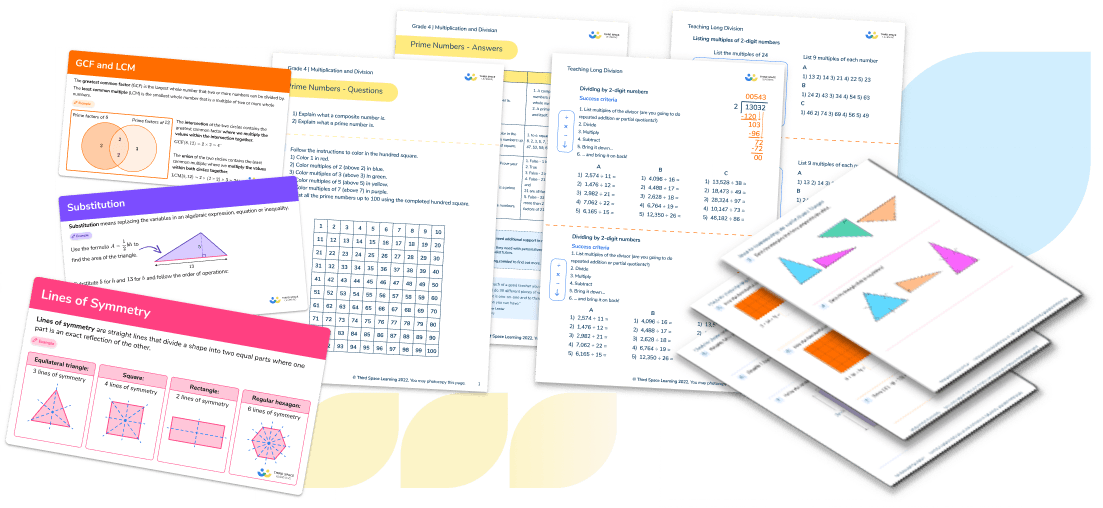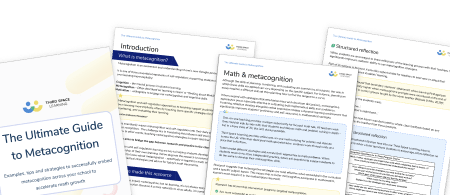Rote Memorization: Is It Effective In Education?
Rote memorization, sometimes known as rote learning is one of the oldest teaching strategies that exist. But whether or not it’s effective in education is a much debated topic.
This article looks at the role of rote memorization in helping students solidify basic facts and foundational knowledge in the long-term memory, the benefits and disadvantages, and teaching strategies that help to enhance rote memorization.
What is rote memorization?
Rote memorization is a learning strategy where students repeat or rehearse facts or foundational knowledge until they can recall it with automaticity, or with low levels of thinking or retrieval practice.
The goal of rote learning is to enhance learning and memory, so students can quickly recall information when they need it for problem solving and higher order thinking.
For example, a group of kindergarteners sit on the carpet counting together in tens. This is the tenth time students have completed the counting routine and most of them can count along. Even when the teacher’s voice trails off, the students who have memorized the pattern continue confidently—50, 60, 70…
Effective educators may use rote memorization to help increase learners’ ability to move information from short-term memory to long-term memory. Then, they can retrieve it long after they have stopped practicing.
However, not all subjects or topics lend themselves to rote memorization, some require more active learning. However, rote learning can prove useful when solidifying:
- Information in a specific order or sequence;
- Vocabulary words;
- Basic facts;
- Repetitive sequences or processes.
Math facts lend themselves perfectly to rote learning. Once students learn their fact families to 10, 20 or 100, they can recall them long into adulthood and use them for more complex problem solving.
The Ultimate Guide to Metacognition
A guide to the key information schools and teachers need to know about metacognition in regards to math teaching and learning including tips and ideas to use with students.
Download Free Now!Rote memorization in education
Rote learning is an ideal type of learning for information learned in a sequence, or for skills that never change over time, like math facts. Rote repetition can help students rehearse facts and content independently.
It is also ideal for information students will need to access and use in their working memory while engaging in higher-level problems.
Elementary education
In elementary education, rote memorization is often used for learning times tables, fact families and other basic mathematical concepts. Rote repetition can be a helpful lesson starter
For example, a third grade teacher passes out sets of multiplication flash cards. Students warm up for the lesson holding up a flashcard for a partner. If the partner answers correctly, the flashcards goes into the “done” pile. If they don’t, then the card goes into the “practice” pile. After each student has had a chance to practice, the teacher collects the cards and starts a lesson on solving word problems using multiplication.
Other examples of rote learning in elementary school include:
- Learning memorization techniques (for example, mnemonics),
- Rehearsing multiplication tables,
- Practicing flashcards with math vocabulary words,
- Using math apps that include memorization practice, and
- Timed math facts quizzes.
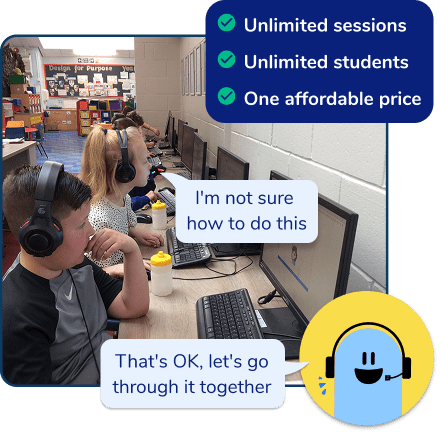
Meet Skye, the voice-based AI tutor making math success possible for every student.
Built by teachers and math experts, Skye uses the same pedagogy, curriculum and lesson structure as our traditional tutoring.
But, with more flexibility and a low cost, schools can scale online math tutoring to support every student who needs it.
Find out moreHigh School and Beyond
By the time students enter high school, they have a wealth of knowledge that they have already memorized. As they move into more complex math concepts, having basic concepts memorized allows them to learn more complex topics.
For example, in a Geometry classroom, a teacher introduces the idea of the Pythagorean theorem. The teacher does not have to review concepts of triangles, angles, and degrees because students have already memorized that information.
The teacher tells students they will have to memorize the Pythagorean theorem. By the second week of the unit, students have memorized the equation and how to solve it and are using their knowledge to quickly solve basic and advanced problems using triangles.
Other examples of rote memorization in high school include:
- Memorizing vocabulary words,
- Memorizing math equations, and
- Using memorization to prepare for assessments like the ACT or AP test.
Rote memorization vs. meaningful learning
Often, rote memorization is seen as an old-fashioned teaching method and is not students’ favourite type of learning due to its repetitive nature.
While rote memorization should not be used exclusively as a learning strategy; it does support problem solving and critical thinking skills that students use in meaningful learning.
Teachers should strike a balance between rote learning and meaningful learning. For example, teachers should not wait until students memorize all the equations in a lesson before they assign an application project.
Instead, they can provide students with a reference page of equations and encourage students to use the reference sheet to complete the project. This allows students to continue to practice math facts, while engaging in meaningful tasks.
Additionally, rote memorization should not come at the expense of deeper understanding. For example, students should learn math facts, but if they do not have a conceptual understanding of math processes as well, then they will be limited in their problem solving skills later on.
Benefits of rote memorization
Once students have memorized content, it is easier for them to apply these pieces of information and knowledge. This means learners can work through more problems in less time.
Students can also work with more complicated concepts because they are not using their energy to recall basic information and facts.
Furthermore, when students know how to apply rote learning, they can better prepare for tests.
Rote learning:
- Provides a foundation of knowledge for students to use when solving problems;
- Allows students to quickly recall and use information;
- Helps students learn new information.
Disadvantages of rote memorization
Rote memorization is just one learning method for the math classroom and should be used with other learning strategies.
If students only learn through rote memorization, they gain facts but not a conceptual understanding of the skills and concepts. For example, students may memorize the math fact 2+4=6 but without understanding how to add 2 and 4, they may not understand why the answer is 6 or make place value links such as when you add 20 and 40 the answer is 60.
Additionally, learning entirely through rote memorization does not necessarily mean the information is retained over time. If the information is not used frequently, students will lose this knowledge.
This is what happens when students cram for a test-they memorize information just long enough to take the test, but the information doesn’t move from working memory to the long term memory.
When it is overused, rote repetition can feel boring for students, especially when students are rehearsing information they already know.
Benefits and disadvantages of rote memorization
| Advantages | Disdvantages |
| ● Provides a foundation of knowledge for students to use when solving problems; ● Allows students to quickly recall and use information; ● Helps students learn new information. | ● Feels boring and repetitive if used too much; ● Information may not be integrated into long-term memory if students are not using it regularly; ● If rote memorization is used too much, students may have limited opportunities to apply knowledge to meaningful learning and problem-solving. |
Teaching strategies to enhance rote memorization
There are many teaching strategies to support rote learning. Here are a few teaching strategies to incorporate in your lesson planning to embed math facts into students long-term memory:
- Spaced repetition
- Flashcards
- Copy-cover-compare
- Mnemonics
Spaced repetition
During spaced repetition, students review material at systematic intervals. When students learn a new skill or concept, they should review the information at short intervals at first. As learners become more familiar with the information teachers should lengthen the intervals between reviews.
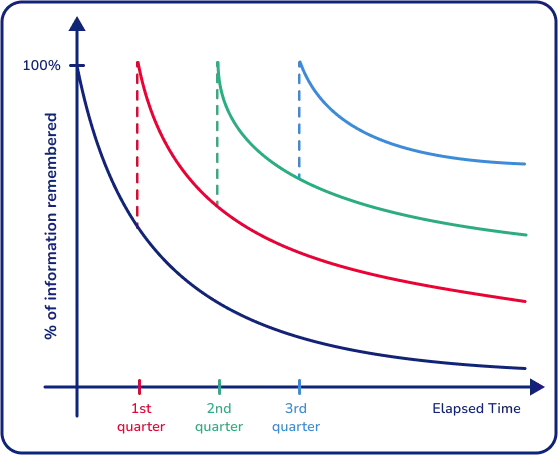
Spaced repetition is more effective for information retention than learning the concept and reviewing it before the test. If students forget information between intervals, they can use their preferred learning strategy to strengthen their recall of that specific information or shorten the intervals.
For example, a teacher introduces the eight times table using spaced repetition. The class practices the times table twice during the lesson and once more before the end of the school day. That week, they practice the eight times table during each math class. The next week, they practice the eight times table every other day, and within a month they practice once a week.
Flashcards
Flashcards are simple rote memorization aids that have a problem, word, or prompt on one side and the correct response the other side. A student looks at the first side and says or writes the answer. If they are correct, they can put that flashcard aside. If they are not, they put the flashcard into a pile to review again.
In the classroom, flashcards can be used in groups or pairs for practice. Students can each have their own set of flashcards for independent practice.
It is best to use flashcards after introducing a new concept, teaching times table or a set of vocabulary and for students to practice and review.
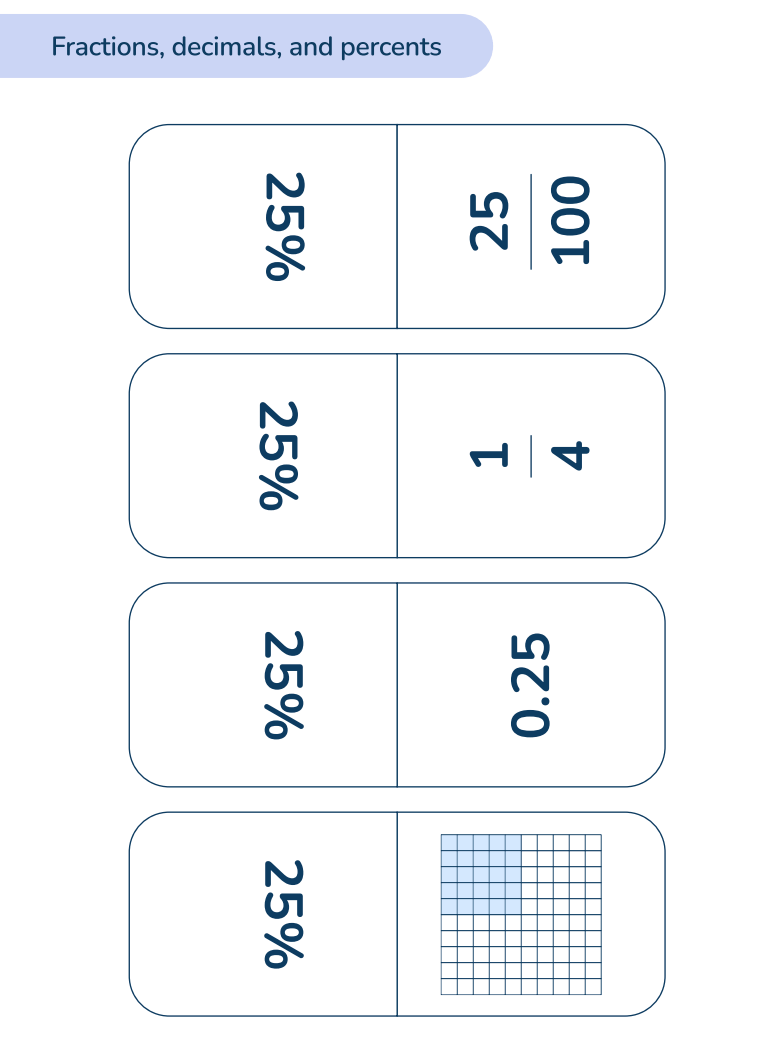
Flashcards are a helpful resource to use as part of spaced repetition:
- Provide students with paper or online flashcards to use at spaced intervals.
- Once they master all of the flashcards, lengthen the interval between reviews.
- If students forget the information, shorten the interval between flashcard reviews.
Box flashcard method:
- Students review the flashcards and put the flashcards that they know automatically into one box.
- They review these flashcards less frequently.
- As they memorize more information, more flashcards go into the box and they can return to the box of flashcards less frequently as the information moves into long-term memory.
Copy-Cover-Compare
Copy-Cover-Compare is a research-based practice that students can use to learn vocabulary words, math facts, and other basic information.
To use cover-copy-compare:
- Students create three columns;
- In the first column, they write the information they want to memorize;
- They cover the first column and write the answers or definitions in the second column;
- Finally, they uncover the first column and compare their answers with the correct ones. From this, they know what to continue practicing.
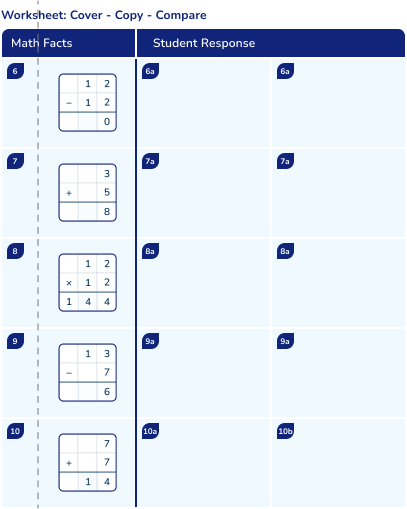
Mnemonics and memory aids
Mnemonic devices and memory aids are techniques that students can use to remember information. Research shows using mnemonic devices and memory aids make learning more efficient because they engage students in the way that the human brain already stores information.
Effective memory aids include:
- Acronyms
- Association
- Chunking
Acronyms
An acronym is a word created using the first letter of a group of words that students need to remember. For example, when teaching the order of operations, you can teach students to Please Excuse My Dear Aunt Sally or PEMDAS (Parenthesis, exponents, multiplication, division, addition, subtraction).
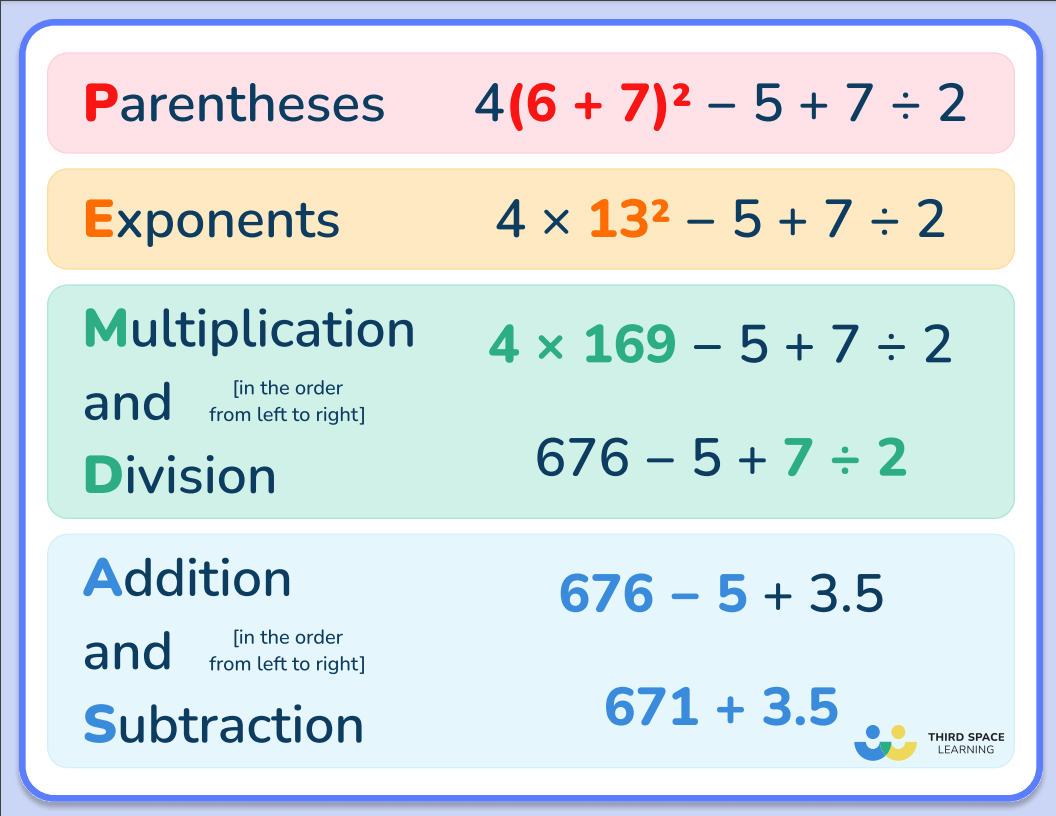
Association
Association is a fairly easy learning technique. The idea is that students link new information to what they already know.
For example, as students learn new math vocabulary words they can connect new definitions with what they already know. The word “reflection” in math is similar to its meaning when we are talking about reflection, students may think of a mirror.
Chunking
Chunking involves students breaking down information into “chunks” they can easily remember. For example, breaking down a 10 digit phone number into three smaller chunks of numbers to remember it.
On average, a person can remember seven items, plus or minus two. So, chunking information into smaller bits can help retain new knowledge. This is helpful for memorizing information that can seem random, like sequences of numbers.
Supporting students who struggle with rote learning
Each student has different amounts of information they can work with at a time before they exhaust their cognitive load. It also takes some students more time to store information in their long term memory.
For students who have trouble memorizing information, these accommodations can help:
- Provide students with a reference sheet to easily access the information they need to memorize. For example, you may give a student a multiplication chart while solving word problems.
- Keep a box with materials for review and encourage the student to practice as much as possible.
- Help students track their progress over time. Students can set a goal for how many words or basic facts they will memorize and then track their progress, even if it’s slow and steady.
- During assessments, assess students’ deeper understanding of a topic, not their memorization skills. Provide reference sheets or access to a resource bank during tests and quizzes.
Why you should still use rote memorization in education
Rote memorization is an important part of education. Students do need to know and use foundational information and basic facts. And, it can be fun for students to see how they progress day after day as they work through flashcards or memory games.
When rote learning is used strategically in the learning process to help students store information they will recall and use frequently, it is beneficial and contributes to meaningful learning.
READ MORE: 13 Effective Test Taking Strategies
Rote memorization FAQs
What is an example of rote memorization?
An example of rote memorization is repeatedly reciting the multiplication tables until they are committed to memory. Another common example is memorizing spelling lists or vocabulary words through repetition without focusing on their deeper meanings or usage.
Is rote memorization good?
Rote memorization can be useful for retaining basic facts and information, such as mathematical formulas or historical dates. However, while it helps with quick recall, it doesn’t necessarily foster a deeper understanding of the subject. It is most effective when paired with other strategies that promote comprehension and application.
What is a drawback of rote memorization?
A key drawback of rote memorization is that it doesn’t encourage critical thinking or problem-solving. Students may remember facts but struggle to apply them in new or unfamiliar situations. This approach can also limit long-term retention of information, especially if understanding is not developed alongside memorization.
Do you have students who need extra support in math?
Skye—our AI math tutor built by experienced teachers—provides students with personalized one-on-one, spoken instruction that helps them master concepts, close skill gaps, and gain confidence.
Since 2013, we’ve delivered over 2 million hours of math lessons to more than 170,000 students, guiding them toward higher math achievement.
Discover how our AI math tutoring can boost student success, or see how our math programs can support your school’s goals:
– 3rd grade tutoring
– 4th grade tutoring
– 5th grade tutoring
– 6th grade tutoring
– 7th grade tutoring
– 8th grade tutoring
